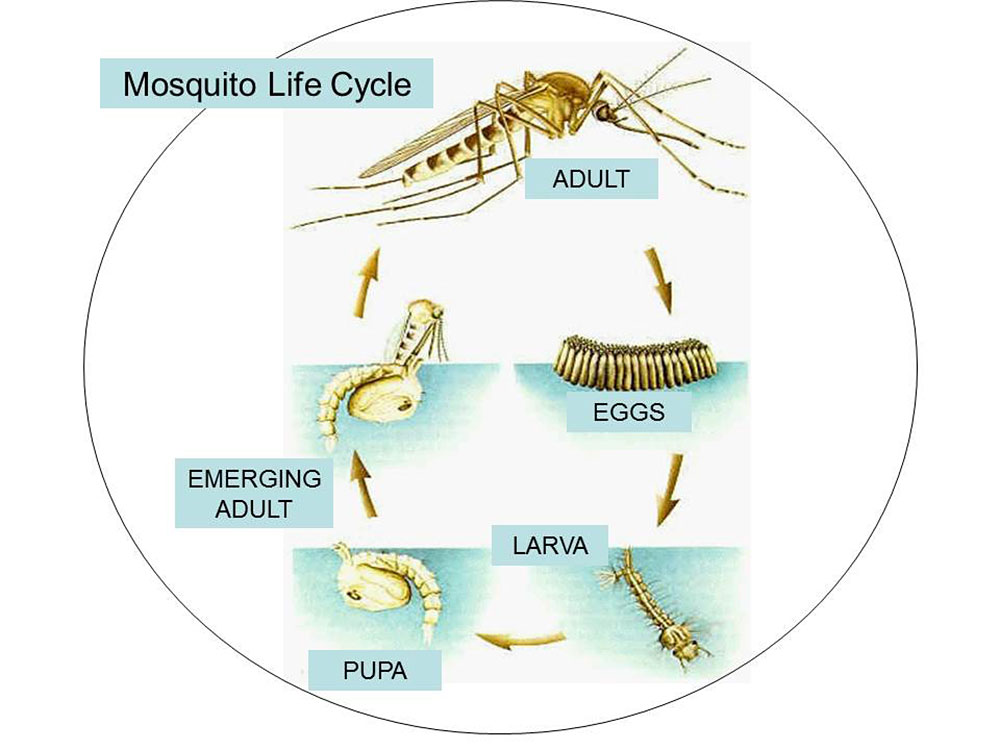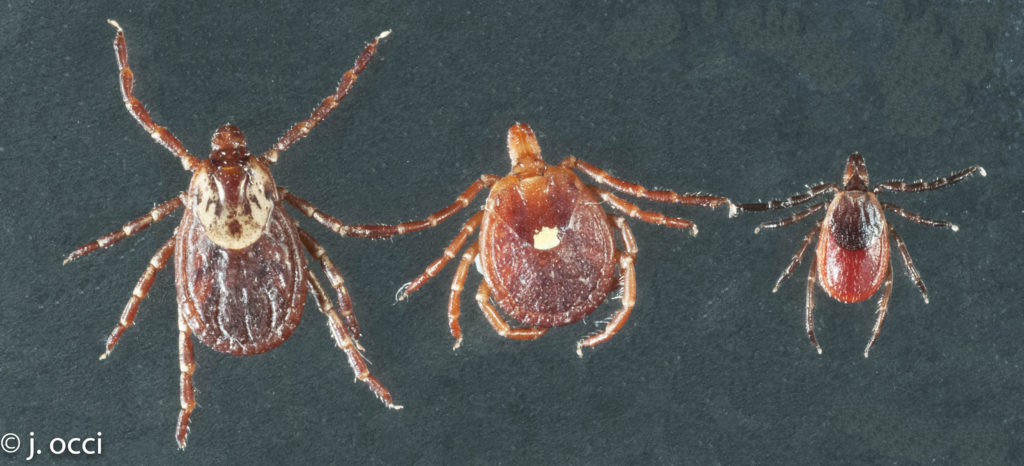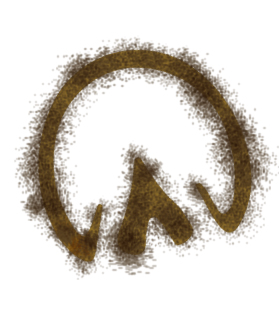Hay Everybody!
Guess what? I got to be a student again this past week. Rutgers Cooperative Extension offers so many amazing opportunities, and I took advantage of their recent webinar on mosquitoes and ticks. I can’t wait to share my knowledge with all of you! Are you ready to learn the nitty, gritty details on these little critters?
Mosquitoes
We’re going to take an in-depth look at that little insect known as a mosquito for starters. Did you know there are approximately sixty-three species of mosquitoes in New Jersey alone and there are over three thousand species worldwide? Whew, that’s a lot of mosquitoes. To put these numbers into perspective, there are only around three hundred fifty breeds of horses in the entire world! The mosquito has a short life cycle of five to seven days which is dependent on the ambient temperature. Interestingly, mosquitoes don’t always feed on a blood meal. They can also feed on nectar but do need a blood meal for egg production. The blood provides protein for the formation of the eggs. The female will lay single eggs or an entire raft of the eggs in water. These eggs hatch into larvae which will continue to grow and molt in the water.
Even though these larvae are aquatic or live in water, they do have to breathe air. Larvae cannot survive very well in moving water, so they are found in still water. This could include areas like a pond or swamp, your horse’s water tank, or that bucket filled with rainwater you left laying out in the barnyard. After the larval stage, mosquitoes enter the pupae stage. The pupae develop within an exoskeleton and remain within the water. While they are in the pupae stage, mosquitoes do not eat. (That doesn’t seem like it should be possible! I am pretty sure I would starve!).
Once the adults emerge, they seek food sources in order to reproduce and lay eggs to start the life cycle all over again. Adult mosquitoes can sense body heat, carbon dioxide, body odor chemicals, and movement which they use to locate their prey (Eek! That’s you and me!). We all know mosquito bites can hurt and be itchy, but the real threat mosquitoes pose is their role in the spread of infectious diseases. West Nile Virus (WNV) and Eastern and Western Equine Encephalomyelitis (EEE/WEE) are among the most common of the diseases transmitted by mosquitoes. The mosquito picks the virus up when it feeds on a diseased host, a bird or rodent, the disease is then transmitted to the horses or humans when the mosquito enjoys a snack from you or your horse.

Fact Sheet FS1240 – Rain Barrels and Mosquitoes)
Ticks
Ticks are also a concern because they have the potential to transmit diseases just like mosquitoes do. Some of the most common tick-borne diseases in horses include Lyme disease, equine piroplasmosis, and anaplasmosis. For humans, Lyme disease in the number one tick-borne illness in New Jersey. Despite their similarities, there are also many differences between ticks and mosquitoes. Ticks are in the Arachnida class meaning they have eight legs as an adult. They only have six legs as a larva, though! Unlike mosquitoes, ticks need a blood meal in every stage of their life. The female lays eggs in leaf litter (dead leaves covering the ground). She can lay a whopping one thousand to eighteen thousand eggs!! The eggs hatch into larvae which feed on small animals like rodents. After feeding, the larvae drop off and will grow into nymphs. These nymphs feed on small to medium sized animals before becoming adults.
It’s typically the adults you’ll find on yourself and your horse as these adults feed on medium to large hosts before laying eggs. Just like the mosquito, ticks transmit diseases through their bite while feeding on their host. The tick will pick up the disease in an early life stage (larva or nymph) and then transmit it to the next host they latch on to. New Jersey is home to a number of ticks including the blacklegged, lone star, brown dog, woodchuck, longhorned, and American dog ticks. Each species is most active at specific times of the year, but any time the temperature is above freezing you run the risk of coming into contact with ticks. Ticks, like mosquitoes, are attracted to carbon dioxide, body odor chemicals, body heat, moisture, vibrations, and visual cues like shadows. Ticks also display a behavior known as questing where they climb to the end of a branch or leaf and spread out their legs in an attempt to “catch” and climb on to a host (Eek! That’s you or me.).

Now that I’ve shared my new knowledge about mosquitoes and ticks with you, maybe you’re wondering how you can stay free of these little critters. Well, don’t worry. I also picked up some tips in this area. I found out practicing integrated pest management (IPM) is the best way to control the populations of mosquitoes and ticks. IPM includes surveillance, source reduction, biological control, education, and insecticide control. Surveillance means you should simply keep track of how many mosquitoes and ticks you see. This includes thoroughly checking you and your horse for ticks. You can also dip for mosquito larvae in standing water. Just dip a white container into the standing water and see how many mosquito larvae are swimming around. Watch out, though, your shadow can scare them away! Surveillance helps you determine whether your other practices are effective and how vigilant you need to be.
Source reduction means eliminating environments that mosquitoes, ticks, and their hosts like to hang out in. An obvious source reduction technique it to get rid of standing water and regularly clean the standing water sources you cannot eliminate. Try to keep leaf litter out of areas where you and your horse routinely go. Providing a woodchip barrier between your barnyard and surrounding woods can discourage ticks from traveling into your barnyard. You’ll also want to discourage rodents from visiting or taking up residence by keeping things tidy and eliminating possible hiding places. Education could include talking to your friends and neighbors, so they can put good practices into place. I’m proud of myself for doing my part in educating my friends! Fish can be used as biological control for mosquitoes as the fish feed on the larvae. Insecticides can be used to help control mosquito populations. The most effective insecticides target the larvae and thus, are applied to water sources. If you choose to use an insecticide or acaricide, you’ll want to use one that’s regulated by the EPA and carefully follow the instructions.
When you are planning to visit an area where ticks and/or mosquitoes are prevalent you’ll want to take steps to protect yourself and your horse. You can use repellants that are labelled for use against ticks and/or mosquitoes. Again, you’ll want to make sure you use a product regulated by the EPA and carefully follow the instructions for use. Dressing in light colored, loose fitting clothes with long sleeves and pants protects you. Your horse can be outfitted with a fly mask to protect sensitive areas of his face. You’ll want to make sure it fits properly and doesn’t rub.
Washing clothes or saddle pads won’t kill ticks, instead heat from the dryer can help you kill these little pests! Make sure you dry your clothes for at least an hour in the dryer. Lastly, anytime you come back from a visit to the barn or a trail ride, you’ll want to make sure you thoroughly check yourself and your horse for ticks. They especially like to hide in warm, dark places such as the folds of skin at the top of your horse’s leg at his elbow. If you do find a tick, use a pair of tweezers to firmly grasp the tick close to the skin. Apply firm, steady pressure in an upward direction until the tick pops out. Then clean the site with rubbing alcohol.
Whew, my trip back into the classroom has worn me out! I hope you picked up some good tips on keeping yourself safe from ticks and mosquitoes. You can check out the full presentation by following these links: Part 1 – https://youtu.be/w-oYvLItbpI, Part 2 – https://youtu.be/VBHV8XyYroU. I’m going to be extra careful the next time I head out onto the trail. For now, I’m off to take a nap.
Until Next Time!
Your friend,

Lord Nelson
